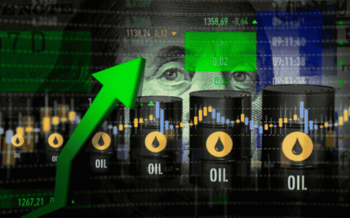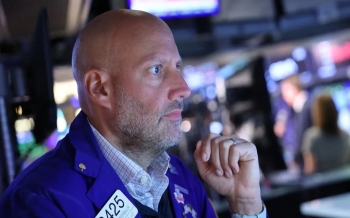Oil prices retreat as markets await geopolitical progress and U.S. trade policy developments
Global oil prices retreated on Tuesday as optimism over diplomatic progress in Eastern Europe temporarily overshadowed supply concerns. Despite signs of possible negotiations that could ease geopolitical tensions, uncertainty continues to dominate energy markets, with traders closely monitoring both political signals and economic data to gauge future price direction.
As of 15:15 KSA time, Brent crude futures for October delivery fell by 0.8% to $66.09 per barrel, while West Texas Intermediate (WTI) contracts dropped by 0.8% to $62.18 per barrel. The pullback followed a modest rebound in the previous session, when both benchmarks gained around 1% amid renewed worries over discounted Russian crude flows and their potential impact on global supply balances.
The current volatility highlights how sensitive the oil market remains to any geopolitical developments. Diplomatic headlines continue to weigh heavily on investor sentiment, but market participants are not fully convinced that a comprehensive ceasefire or long-term peace deal is imminent. According to market indicators, the probability of a ceasefire being reached before year-end stands below 40%, far lower than earlier this year when optimism peaked above 75%.
Beyond geopolitics, investors are increasingly focused on potential shifts in U.S. trade policy. Speculation has grown around the possibility of Washington imposing additional tariffs of up to 25% on crude imports from certain Asian economies, raising fears of a reshuffling in global trade routes. Should these tariffs come into effect, energy markets could face both tighter supply conditions and higher price volatility.
Analysts warn that the global oil market may be heading into a complex phase where supply disruptions clash with weakening demand. On the supply side, sanctions, tariffs, and disruptions in shipping routes are expected to put upward pressure on crude benchmarks. On the demand side, a slowing global economy—exacerbated by stubborn inflation and tighter monetary policy—remains a significant drag on consumption.
Another critical factor shaping oil’s trajectory is the strength of the U.S. dollar. With the Federal Reserve maintaining a hawkish stance and interest rates hovering at multi-year highs, the dollar has surged against major currencies. Since crude oil is priced in dollars, this appreciation makes oil more expensive for non-dollar holders, ultimately weighing on global demand.
According to analysts at Point Trader Group, the coming months are likely to remain turbulent, with prices swinging in response to a delicate balance between supply fears and demand headwinds. They highlight that weekly U.S. inventory data, alongside consumption trends in key economies such as China and India, will serve as crucial indicators for traders navigating these volatile conditions.
The broader energy sector also faces long-term challenges. While crude remains the backbone of global energy consumption, policymakers and corporations worldwide are accelerating efforts toward renewable and sustainable alternatives. This duality—between securing affordable energy supplies today and transitioning to a greener future tomorrow—adds another layer of uncertainty for oil investors.
In the short term, however, oil markets are expected to remain highly reactive to geopolitical and macroeconomic developments. Traders are paying close attention to any diplomatic breakthroughs, signals from central banks regarding interest rate trajectories, and weekly inventory reports from the U.S. Energy Information Administration (EIA). Even minor headlines could trigger outsized price moves given the heightened sensitivity of today’s market environment.
Ultimately, crude oil prices appear set for a prolonged period of volatility. On one hand, supply risks from sanctions, tariffs, and disruptions could tighten the market. On the other, weak demand linked to inflation, higher borrowing costs, and slowing industrial activity could cap any sustained rally. For investors and institutions alike, navigating these swings requires flexibility, disciplined risk management, and a deep understanding of both geopolitical and macroeconomic dynamics.
As Point Trader Group notes, the energy market is entering an era where short-term news flows and long-term structural changes intersect. In such an environment, strategic positioning and comprehensive market analysis will remain essential tools for those seeking to capitalize on opportunities while mitigating risks.


 English
English
















